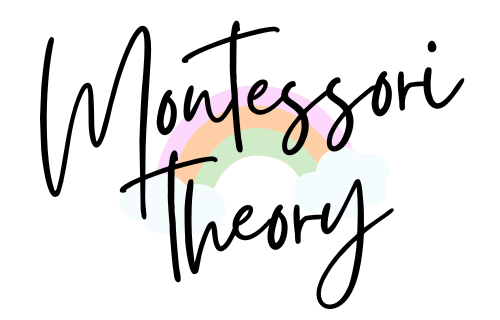The foundational idea behind Montessori education is based on encouraging children to become self-directed learners. One such method that achieves this goal is through the use of manipulatives like the Geometric Cabinet. Comprising a range of geometric shapes (circles, triangles, quadrilaterals, and polygons), this tool promotes active engagement with materials in a way traditional teaching may not always be able to provide.
The Importance of Geometry in Early Childhood
Children, especially during their preschool years, are in what Montessori termed the “sensitive period” for language and order. It’s a time when their brains are primed to absorb information, patterns, and structures. Geometry, with its shapes, lines, and forms, provides the perfect foundation for later mathematical concepts.
Moreover, Montessori’s visual sensorial materials, like the Geometric Cabinet, play a pivotal role in this learning phase. They offer children a concrete way to understand abstract concepts, bridging the gap between the tangible and the intangible.
What is the Montessori Geometric Cabinet?
Imagine a wooden cabinet, meticulously crafted, with six drawers waiting to be explored. This is the Montessori Geometric Cabinet, typically introduced to children between the ages of 3 and 4. As children grow, the cabinet remains a constant companion, aiding their learning through primary and even elementary years.
Each drawer of the cabinet reveals a world of shapes, from simple circles to intricate polygons. The yellow sockets house these shapes, while the blue knobbed insets invite children to grasp, feel, and understand each form.
Components of the Geometric Cabinet
The cabinet comes equipped with multiple elements, which include:
- Six drawers – each containing a different set of six geometric shape insets
- A control chart – having all shapes from the cabinet displayed on a single large card for reference purposes
- A set of three-sided pencils – encouraging proper pencil grip during tracing activities
Cabinet’s Geometric Shapes
Organized meticulously with various drawers, each compartment is dedicated to a distinct set of shapes, ensuring systematic access and categorization for young learners.
- Drawer 1 – Circles: This drawer is dedicated to circles of varying sizes. It introduces children to the concept of diameter, as the circles gradually decrease in size. From larger circles that fill the palm of a child’s hand to smaller ones that challenge their pincer grip, this drawer is all about understanding the round shape in its entirety.
- Drawer 2 – Rectangles: Here, rectangles of different dimensions await exploration. The length remains constant, but the width varies, allowing children to discern the differences and similarities between each rectangle. It’s a lesson in proportion and comparison.
- Drawer 3 – Triangles: A diverse world of triangles is housed in this drawer. From equilateral triangles with all sides equal to right-angled and scalene triangles, children get a comprehensive understanding of this three-sided shape. Each triangle offers a unique lesson in angles and sides.
- Drawer 4 – Regular Polygons: Moving beyond the basics, this drawer introduces children to polygons, shapes with multiple straight sides. Pentagons, hexagons, and even decagons can be found here. It’s a journey through shapes that have more than four sides, each with its own story to tell.
- Drawer 5 – Curved and Complex Shapes: This drawer is a mix of shapes that challenge the child’s understanding. From ovals and ellipses to more complex shapes like the quatrefoil, it’s about exploring geometry’s diverse world.
- Drawer 6 – Quadrilaterals: Beyond the basic square and rectangle, this drawer delves into the varied world of four-sided figures. Rhombuses, parallelograms, and different types of trapezoids can be found here. Each shape offers a lesson in angles, sides, and geometric properties.
Purpose of the Geometric Cabinet
Beyond its aesthetic appeal, the Geometric Cabinet plays a crucial role in pre-math, pre-writing, and pairing activities. It’s not just about recognizing shapes; it’s about refining the visual discrimination of these forms. This skill, often overlooked, is foundational for reading and numerous other learning activities. As children trace the edges of the insets, they’re not just playing; they’re preparing. These tracing activities hone their pre-writing skills, setting the stage for them to form letters and numbers in the future.
-
Visual Discrimination of Shapes and Sizes
By using the Geometric Cabinet, children learn the art of visual discrimination, a vital skill rooted in differentiating between shapes and sizes by sight. The process of placing and removing insets correctly within their respective areas helps refine a child’s ability to spot subtle differences in form.
-
Enhancing Fine Motor Skills and Concentration
Working with geometric insets involves precise hand movements, promoting the growth of fine motor skills in young learners. Further, as they engage in this activity, children naturally develop an increased level of concentration, required for successfully completing tasks at hand.
-
Building Vocabulary and Learning Terminology
An indirect objective of the Geometric Cabinet lies in its capacity to foster vocabulary development related to various shapes. By exploring circles, squares, triangles, and other polygons, children inevitably come across terminology unique to these forms and gradually internalize them through usage.
How to Present the Geometric Cabinet to a Child
Introducing the Geometric Cabinet to a child is a ritual in itself. It begins with showing them the drawer of interest, guiding them to carry it with care. As they lay out the shapes, they’re encouraged to trace, match, and place each inset in its socket. This activity isn’t just about shapes; it’s about observation, precision, and understanding.
- Orientation: Begin by familiarizing the child with the cabinet’s layout. Show them the drawer that piques their interest and guide them in handling it with care and reverence.
- Engagement: As the child lays out the shapes, encourage them to trace each one, feeling its edges and contours. This tactile experience is crucial for their geometric understanding.
- Matching and Placement: The next step is to match each inset with its corresponding socket. This activity sharpens their observation skills, teaching them precision and attention to detail.
Learning with the Geometric Cabinet
-
Interactive Learning
Through the geometric cabinet, children engage by identifying, naming, and even categorizing the shapes in each drawer. This hands-on approach, where they physically handle the geometric insets, amplifies tactile learning, making abstract concepts tangible.
-
Overcoming Challenges with Tactile Techniques
Children are gently encouraged to trace the shape’s contour with their fingers, a tactile method that reinforces the shape’s form and structure in their minds, aiding recognition and understanding.
-
Exploring Single Shapes Through Trial and Error
Young Montessori learners initially focus on one shape at a time, attempting to place it back into the cabinet without any external guidance. This trial-and-error approach, coupled with tactile feedback from the material, propels children towards self-correction and independent learning.
-
Introducing Additional Insets Gradually
Once a child has mastered working with a single shape, additional insets can be introduced in a progressive manner. As their confidence grows, children can eventually manipulate all six shapes within a drawer, separately or simultaneously based on teacher guidance.
-
Advanced Geometric Terminology
Beyond the basic recognition of shapes, the cabinet serves a dual purpose. It becomes a foundation for introducing specific geometric terms. As children navigate through the drawers, they encounter terms like rhombus, trapezoid, and parallelogram. This early introduction prepares them for more advanced geometric studies in the future.
-
Focusing on Visual Discrimination Between Similar Shapes
In the advanced stages, drawers containing similar shapes, such as the various types of triangles and quadrilaterals, are presented to challenge children’s visual discrimination skills. By thoughtfully organizing and comparing these elements, they make observations regarding similarities and differences in form.
-
Engaging in Montessori Games
Besides working with the Geometric Cabinet independently, a key aspect of the Montessori approach involves group activities that cultivate collaborative learning. Activities like shape guessing games, memory matching, and others can foster peer-based learning experiences using this versatile tool.
Geometric Cabinet Extensions
The Geometric Cabinet’s potential extends far beyond its initial presentation. It’s a tool designed for deep, prolonged engagement.
- Nomenclature Card Exercise: This activity introduces children to the names of the shapes, enriching their vocabulary and deepening their understanding.
- Blindfolded Exploration: By blindfolding the child and asking them to identify shapes by touch alone, this activity hones their tactile senses and spatial awareness.
- Tracing Exercises: Using the tri-sided pencils, children can trace the shapes, reinforcing their understanding and preparing them for writing.
The Impact of Geometric Cabinet Montessori on Overall Development
While at a glance, the cabinet may seem like a simple addition to a classroom, its impact goes far beyond its modest appearance. As children interact with insets and develop their discriminating abilities, they bring these skills into all aspects of learning, be it mathematical concepts or artistic expressions. The cabinet acts as a catalyst for boosting their cognitive, social, and emotional growth as well.
Ultimately, the Geometric Cabinet reflects Maria Montessori’s vision of fostering tactile learning and self-discovery. It bridges gaps between children’s innate curiosity and the structured world of education – an achievement that further reinforces the importance of exploring learning through hands-on, discovery-oriented methods.




